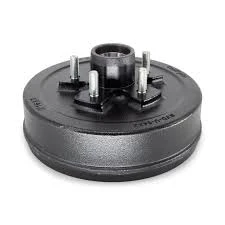
-
 Afrikaans
Afrikaans -
 Albanian
Albanian -
 Amharic
Amharic -
 Arabic
Arabic -
 Armenian
Armenian -
 Azerbaijani
Azerbaijani -
 Basque
Basque -
 Belarusian
Belarusian -
 Bengali
Bengali -
 Bosnian
Bosnian -
 Bulgarian
Bulgarian -
 Catalan
Catalan -
 Cebuano
Cebuano -
 Corsican
Corsican -
 Croatian
Croatian -
 Czech
Czech -
 Danish
Danish -
 Dutch
Dutch -
 English
English -
 Esperanto
Esperanto -
 Estonian
Estonian -
 Finnish
Finnish -
 French
French -
 Frisian
Frisian -
 Galician
Galician -
 Georgian
Georgian -
 German
German -
 Greek
Greek -
 Gujarati
Gujarati -
 Haitian Creole
Haitian Creole -
 hausa
hausa -
 hawaiian
hawaiian -
 Hebrew
Hebrew -
 Hindi
Hindi -
 Miao
Miao -
 Hungarian
Hungarian -
 Icelandic
Icelandic -
 igbo
igbo -
 Indonesian
Indonesian -
 irish
irish -
 Italian
Italian -
 Japanese
Japanese -
 Javanese
Javanese -
 Kannada
Kannada -
 kazakh
kazakh -
 Khmer
Khmer -
 Rwandese
Rwandese -
 Korean
Korean -
 Kurdish
Kurdish -
 Kyrgyz
Kyrgyz -
 Lao
Lao -
 Latin
Latin -
 Latvian
Latvian -
 Lithuanian
Lithuanian -
 Luxembourgish
Luxembourgish -
 Macedonian
Macedonian -
 Malgashi
Malgashi -
 Malay
Malay -
 Malayalam
Malayalam -
 Maltese
Maltese -
 Maori
Maori -
 Marathi
Marathi -
 Mongolian
Mongolian -
 Myanmar
Myanmar -
 Nepali
Nepali -
 Norwegian
Norwegian -
 Norwegian
Norwegian -
 Occitan
Occitan -
 Pashto
Pashto -
 Persian
Persian -
 Polish
Polish -
 Portuguese
Portuguese -
 Punjabi
Punjabi -
 Romanian
Romanian -
 Russian
Russian -
 Samoan
Samoan -
 Scottish Gaelic
Scottish Gaelic -
 Serbian
Serbian -
 Sesotho
Sesotho -
 Shona
Shona -
 Sindhi
Sindhi -
 Sinhala
Sinhala -
 Slovak
Slovak -
 Slovenian
Slovenian -
 Somali
Somali -
 Spanish
Spanish -
 Sundanese
Sundanese -
 Swahili
Swahili -
 Swedish
Swedish -
 Tagalog
Tagalog -
 Tajik
Tajik -
 Tamil
Tamil -
 Tatar
Tatar -
 Telugu
Telugu -
 Thai
Thai -
 Turkish
Turkish -
 Turkmen
Turkmen -
 Ukrainian
Ukrainian -
 Urdu
Urdu -
 Uighur
Uighur -
 Uzbek
Uzbek -
 Vietnamese
Vietnamese -
 Welsh
Welsh -
 Bantu
Bantu -
 Yiddish
Yiddish -
 Yoruba
Yoruba -
 Zulu
Zulu
Understanding the Function and Importance of Brake Drum Cylinders in Vehicle Safety
Understanding Brake Drum Cylinder A Key Component in Vehicle Safety
The brake system is one of the most critical safety features in any vehicle, ensuring that drivers can slow down or stop as needed. Among the various components of this intricate system, the brake drum cylinder plays a pivotal role. This article delves into the function, structure, and maintenance of brake drum cylinders, highlighting their importance in automotive safety.
What is a Brake Drum Cylinder?
A brake drum cylinder, often referred to as a wheel cylinder in drum brake systems, is part of the hydraulic brake system. This component is essentially a cylindrical device that contains pistons and operates under hydraulic pressure to activate the brake shoes. When the driver presses the brake pedal, hydraulic fluid from the master cylinder is directed into the brake drum cylinder. The fluid pressure pushes the pistons outward, forcing the brake shoes against the inner surface of the brake drum, creating friction that slows or stops the vehicle.
Structure and Design
The brake drum cylinder is typically constructed from cast iron or aluminum, designed to withstand considerable pressure and heat generated during braking. Its cylindrical shape allows for an efficient distribution of force and provides a compact design that fits within the wheel assembly.
Key components of the brake drum cylinder include
1. Pistons These are the moving elements within the cylinder that are pushed out by hydraulic pressure. Usually, a brake drum cylinder contains two pistons, one on each side. 2. Seals These prevent brake fluid from leaking and keep contaminants out of the cylinder, ensuring smooth operation.
3. Spring A return spring often helps retract the pistons when the brake pedal is released, allowing the brake shoes to disengage from the drum.
Importance of Brake Drum Cylinders
brake drum cylinder

The safety of a vehicle largely hinges on the reliability of its braking system. Brake drum cylinders are crucial in this regard, as they directly influence how effectively a vehicle can decelerate. A malfunctioning brake drum cylinder can lead to uneven braking, reduced stopping power, and potentially hazardous accidents.
Moreover, brake drum cylinders are designed to withstand significant wear and tear over time. Regular inspections can help identify issues before they escalate. If a brake drum cylinder develops leaks or if the pistons stick, the entire braking system's performance can be compromised.
Maintenance and Troubleshooting
Proper maintenance of brake drum cylinders can extend their lifespan and enhance safety. Here are some tips for maintenance
1. Regular Inspections Brake systems should be inspected regularly, especially the brake drum cylinders, for leaks and signs of wear.
2. Brake Fluid Replacement Ensure that the brake fluid is replaced according to the manufacturer's recommendations. Contaminated or old brake fluid can lead to cylinder corrosion.
3. Watch for Warning Signs Unusual sounds (like grinding or squeaking), a soft or spongy brake pedal, and a vehicle pulling to one side when braking are all signals that there may be a problem with the brake drum cylinders.
4. Professional Assistance If any issues are detected, it’s advisable to consult a professional mechanic to assess and repair the brake system to ensure safety.
Conclusion
The brake drum cylinder is an integral component of a vehicle's braking system. Understanding its function and importance can help vehicle owners appreciate the necessity of regular maintenance and timely repairs. Ensuring that this component is in good working condition directly contributes to the overall safety of the vehicle, protecting both the driver and the passengers. By prioritizing brake maintenance, drivers can enhance their safety on the road and enjoy safer driving experiences.
-
What Are Drum BrakesNewsJul.07,2025
-
Understanding Brake Drum MaterialNewsJul.07,2025
-
Semi-Trailer Brake Drum: A Key Component for Extreme Loads and Long-Distance TransportNewsJul.07,2025
-
Drum Brake Pads for SaleNewsJul.07,2025
-
Brake Drums for SaleNewsJul.07,2025
-
Brake Drum ManufacturerNewsJul.07,2025
-
Aluminum Brake Drums: The Future of High-Performance CarsNewsJul.07,2025
